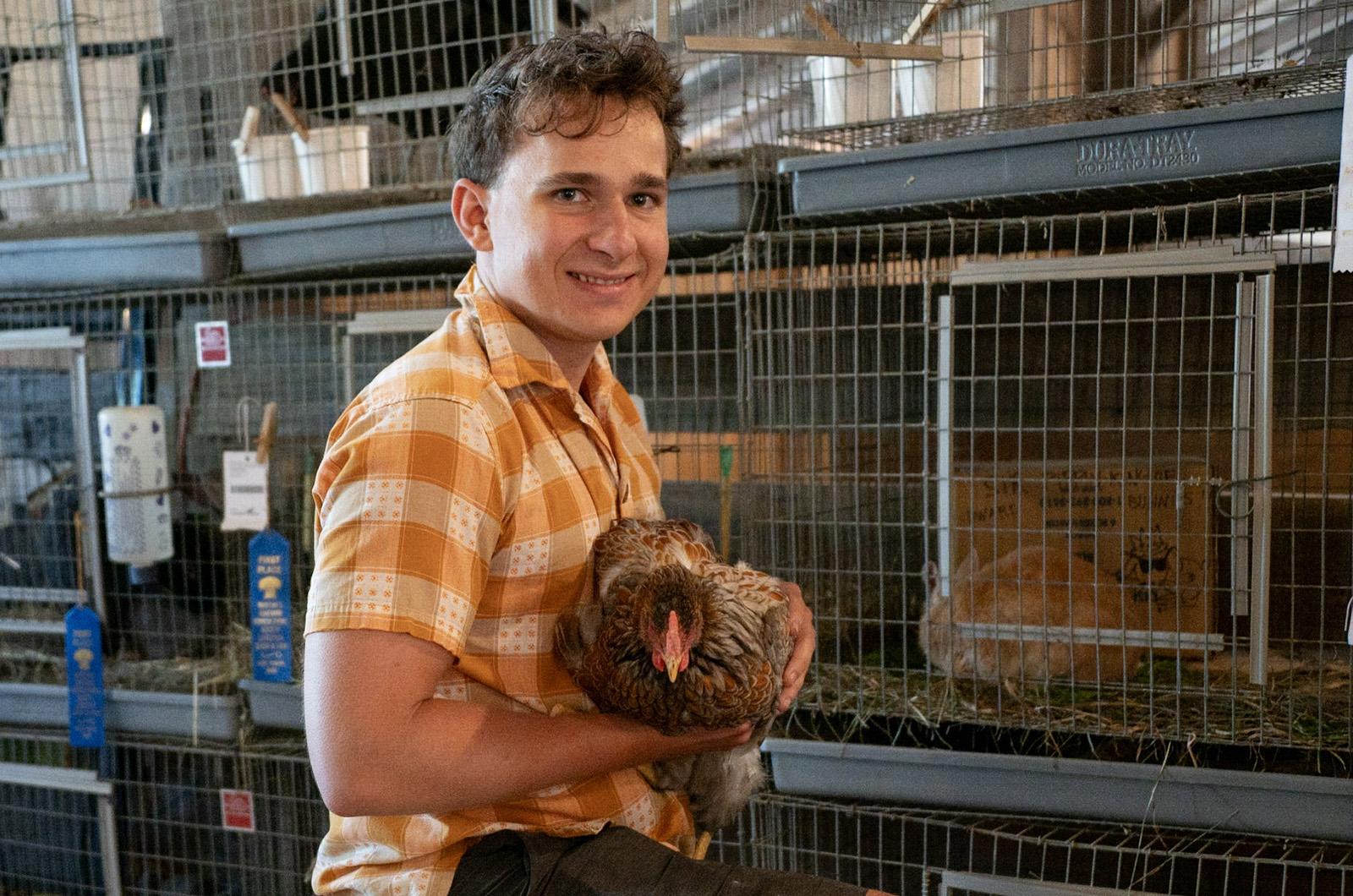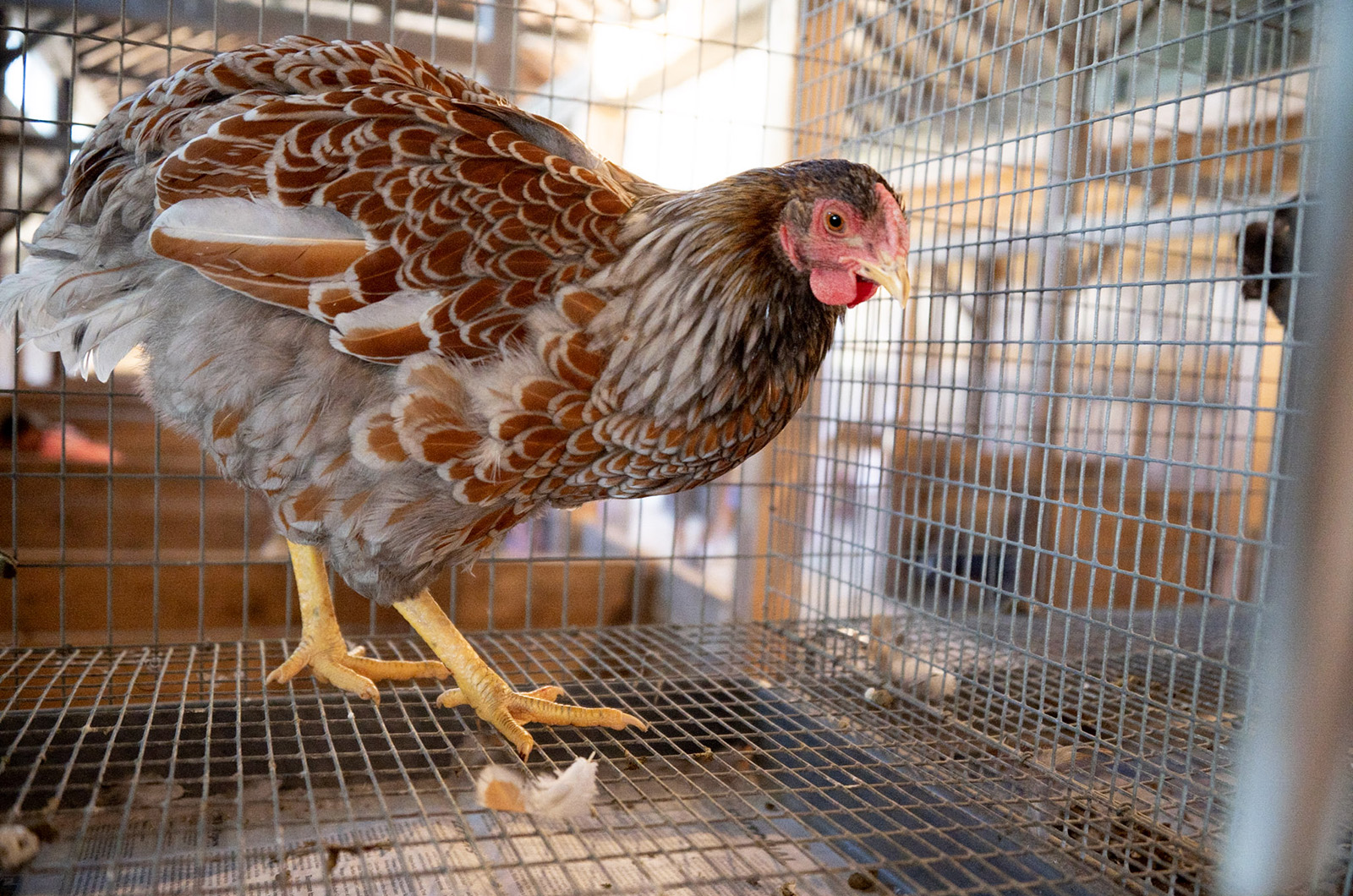She was the sickly one, a source of anguish in my heart, a fluffy little gray chick that seemed to have trouble supporting her own beak and keeping her eyes open.
She was one of five, a quintet of mail order chicks I picked up from SBS on a damp day in early April. I named her Lou, short for Louise, and she grew to be a beauty.
Last weekend, Lou won her first award, third place among purebred hens submitted to the 161st annual Agricultural Fair. It was no surprise to me, of course. I knew from the start Lou was a winner.
I was never told the breed of my chickens but Lou was easy to identify. As a youth, her plumage was all a creamy light gray, but as she grew, highlights of rusty red-brown developed in the center of her individual feathers — the telltale patterning of a Wyandotte hen.
In countenance, too, Lou is usually a joy. The largest hen in my herd, a gentle giant, slow and sometimes oblivious. She has her moments, of course, as all of us do, and Lou certainly didn’t appreciate being away from home and caged at the fair for a few days. (I have the scratches on my arm to prove it.)
Even sweeter than Louise, though, is Gertie, a slender and elegant black australorp, something of a loner amongst the flock. Poor Gertie did not win any award this year, but she seemed unbothered and unflapped by the fair experience.
My flock did receive one other ribbon from the fair, though, a light blue honorable mention for Heather, the brown and black-streaked Ameraucana. She is the feistiest of the hens, the most energetic. When she was a chick, she enjoyed climbing up to perch on my shoulder, but seems to have outgrown that with age.
Hen number four, Georgie, my dear Rhode Island red, never had her chance to compete at the fair. She was the victim of a predator attack a few months ago, the perpetrator of which has yet to be identified (though a racoon is strongly suspected).
That leaves us with chicken number five, Gwyneth [Gwen] the buff Orpington, our accidental rooster. He was always a bully to the other chicks, stealing worms from his smaller siblings whenever he could. At first, I chalked it to personality, a hen with an aggressive side. But then, as his wattle continued to grow and spurs began to emerge from his ankles, the signs became evermore obvious. Gwen is a rooster.
Gwen was not a fair competitor this year; I decided that three was already enough to manage, and that Gwen probably wouldn’t hold up against the competition as a juvenile. Indeed, between the regal Erik the Red, the Americauna, and the gargantuan Brahma Paris, Gwen stood little chance.
During his stay alone at home, though, I got to see a different side of Gwen, the more caring side. He was clearly distressed at the departure of his hens, scrambling all over the run and nervously cock-a-doodle-doing. The whole thing made me rather sad.
The end of the fair this year there was relief for me as well as the chickens. After four days and nights of driving to and from the hall to check food and water, traversing throngs of cars, cows and humans, a little bit of quietude could return to my life.
The hens, meanwhile, were happy to be home, with fresh dirt and kitchen scraps, with space to stretch their legs. And Gwen, of course, was happy to have his hens back and has returned to his usual, impish self.





Comments (1)
Comments
Comment policy »